인도네시아 술라웨시 섬.
그곳의 한 지역인 타나 토라자에는 삶과 죽음의 교차점에 서 있는 우리의 현주소를 볼 수 있는 아주 독특한 장례 문화가 있다. 먼저 이 지역 마을에서 어떤 사람이 죽으면 물소를 제물로 바친다. 제물로 바치는 이유는 여러 가지가 있는데, 망자를 천국으로 인도하는 상징이라고 한다. 망자가 이승에서 길을 떠나 저승으로 발걸음을 옮기는 길잡이 역할을 물소에게 맡긴다고 한다. 죽은 물소의 고기와 가죽은 망자를 기리기 위해 찾아온 문상객을 위해 나뉘고, 긴 뿔을 가진 물소의 머리뼈는 토라자 주 민들의 전통가옥인 통코난 입구에 걸어둔다. 거기에 더하여 제물로 바치는 물소의 수가 많으면 많을 수록 즉 통코난에 물소의 머릿수가 많을수록, 망자가 이승에서 덕을 많이 쌓으며 살았다고 믿고 있 었다. 명망 있는 가문의 노인이나 지역의 족장 집에는 엄청난 수의 물소의 머리뼈가 전시되어있었다.
인간의 눈으로 본 동물의 마음을 담았다.
제물로 바쳐지는 물소들이 어떻게 살아왔고, 그 마지막이 무엇이었는지를.
태어나 술라웨시 고원지대의 들판에서 천국의 어느 한 곳인 것처럼 평온하게 살아왔지만, 영문도 모 른 채 제물로 바쳐지기 위해 시장으로 몰리고 있는 그들의 현실. 오직 두려운 죽음 앞에 죽음으로 두 려움을 물리칠 수밖에 없는 현실이 그들에겐 지옥과 같은 오늘이었다.
나와 눈이 마주친 물소가 내게 마음속으로 말을 걸어온다.
‘사내는 막무가내였다. 그저 나를 알 수 없는 곳으로 데려가려고 해. 내 운명을 나는 알지. 죽음을 위 한 죽임만이 이제 기다려. 두렵고 무서워.’


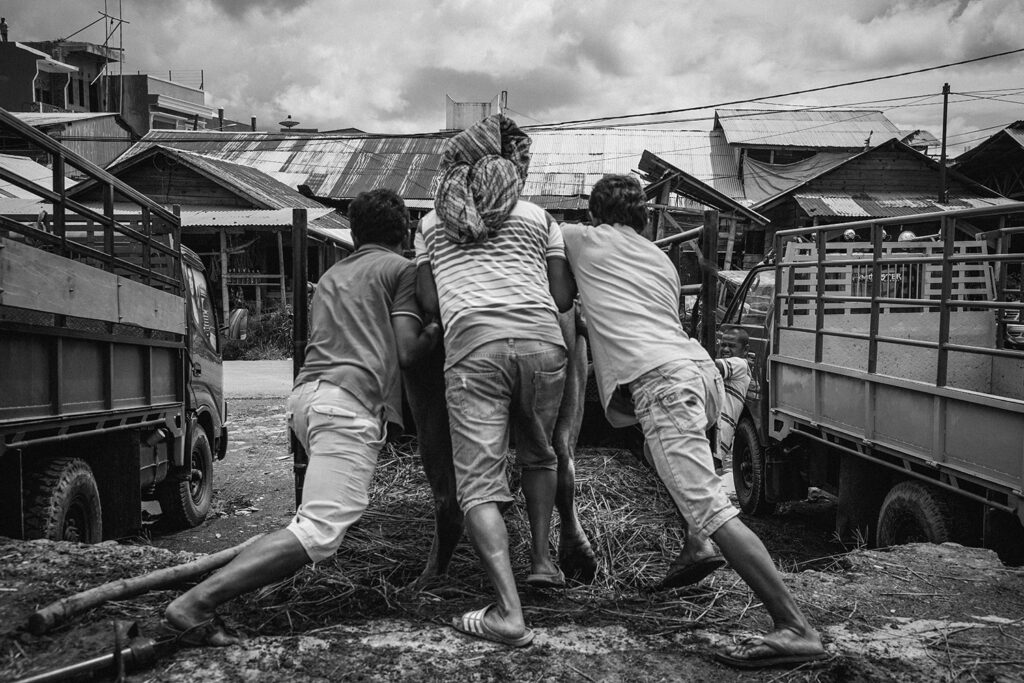


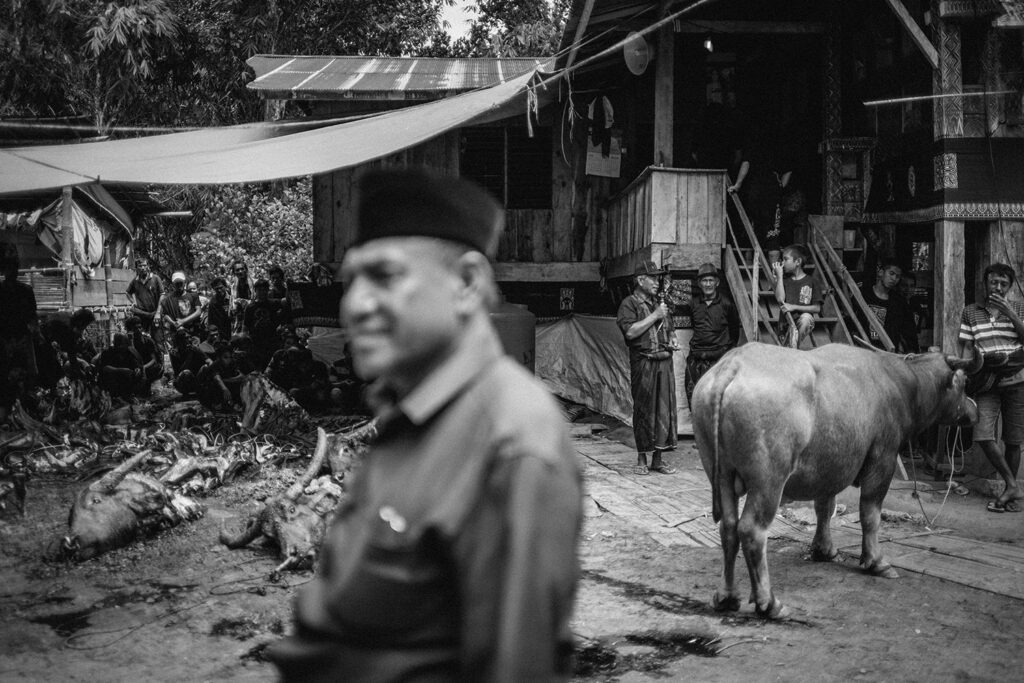

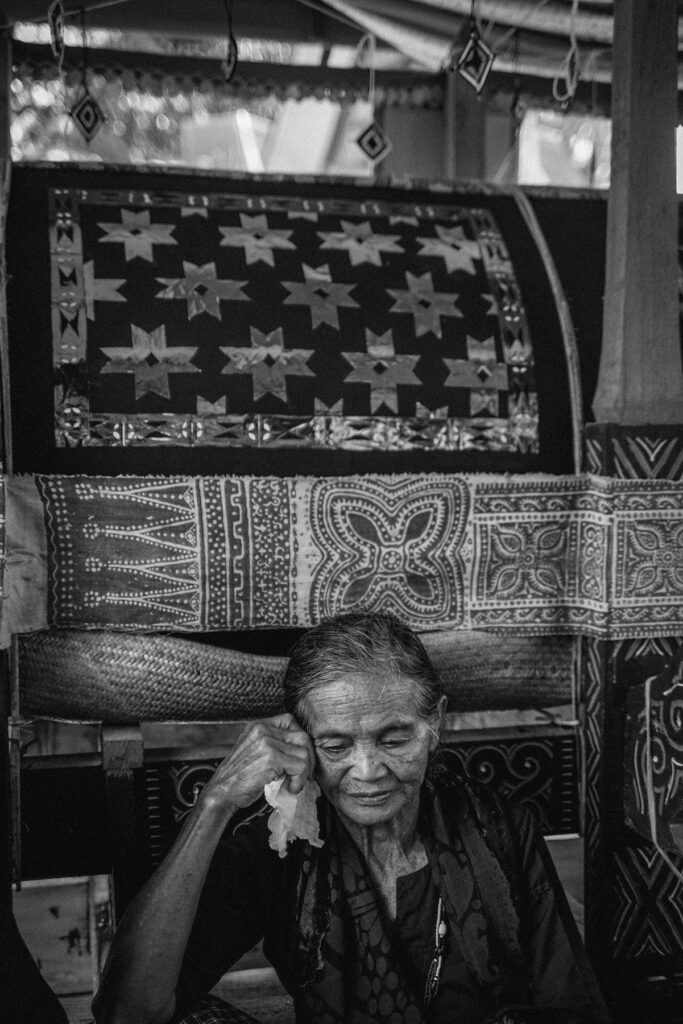




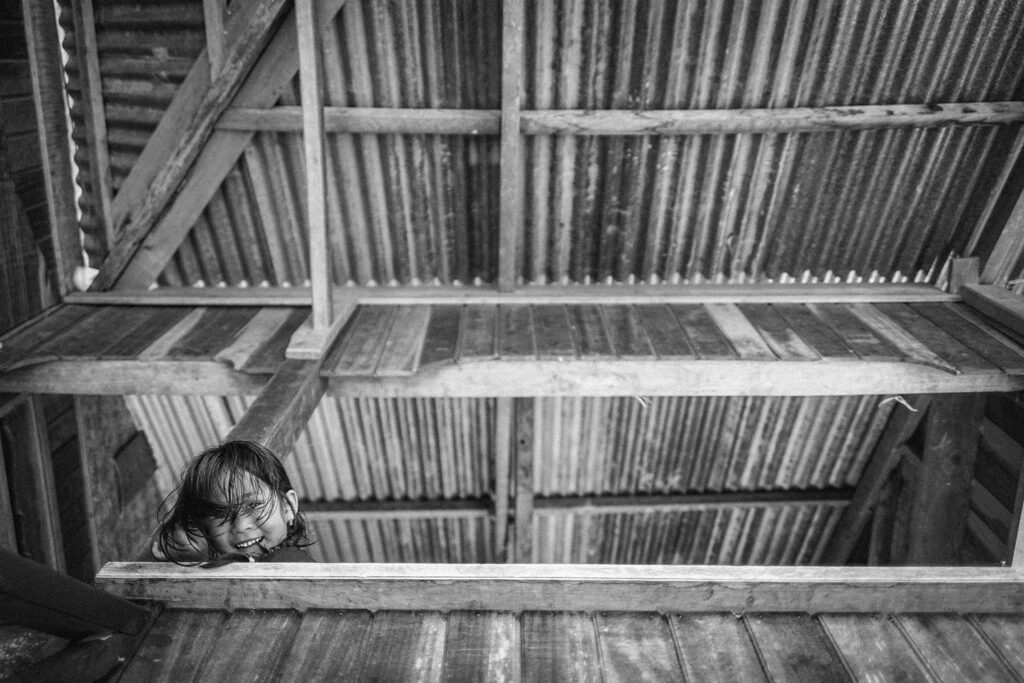





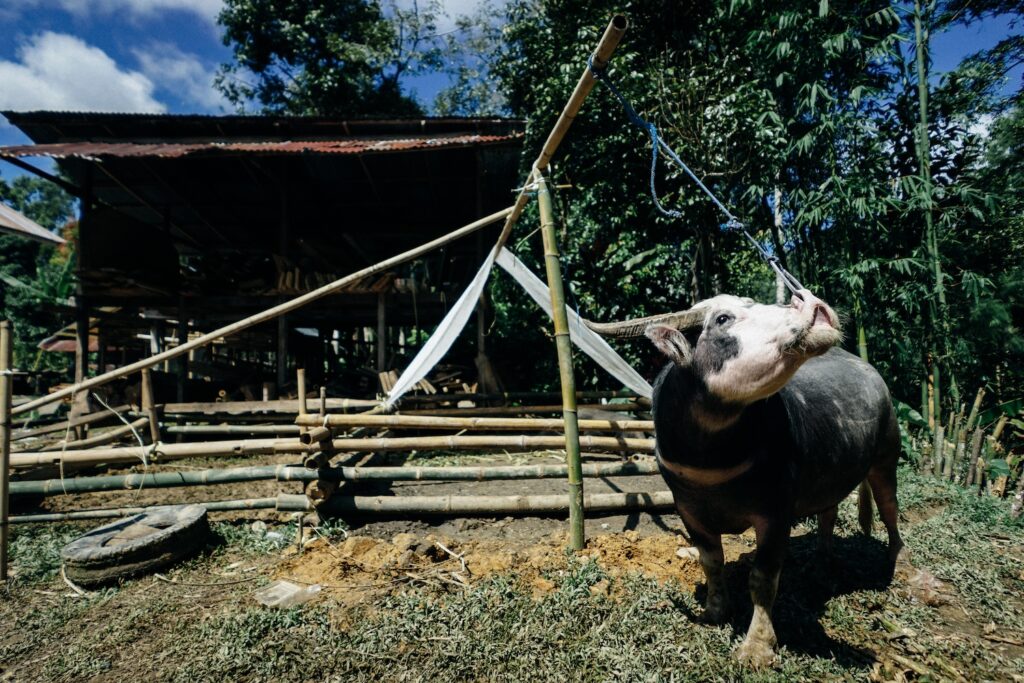







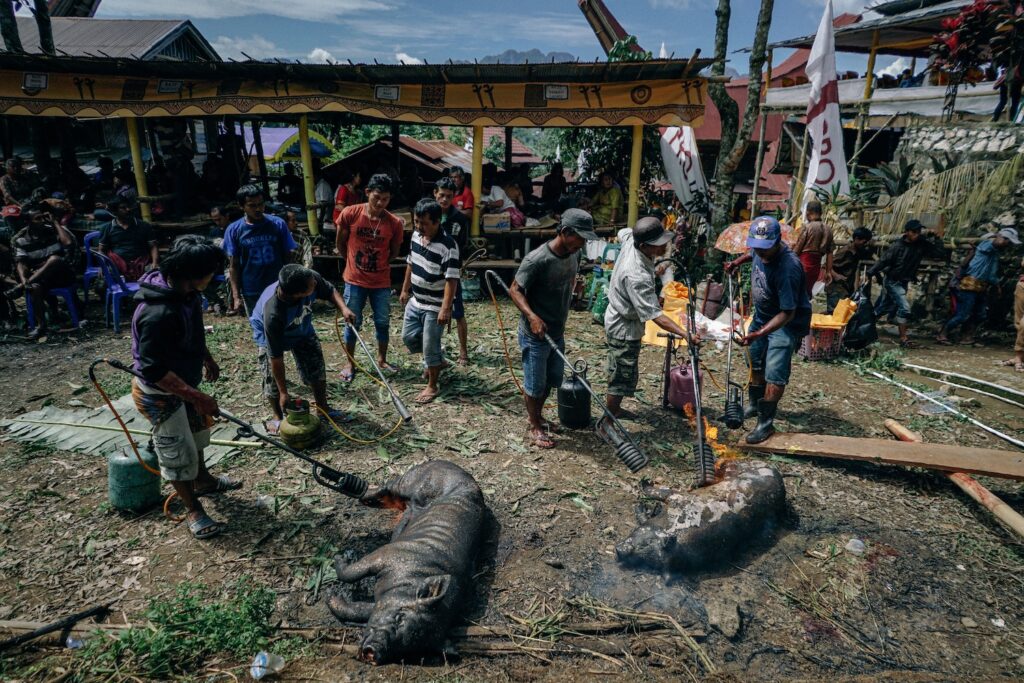







Tana Toraja (lit. ‘Toraja Land’ in Toraja language) is a landlocked regency (kabupaten) of South Sulawesi Province of Indonesia, and home to the Toraja ethnic group. It covers an area of 2,054.30 km2 (793.17 sq mi) and had a population of 221,081 at the 2010 census[3] and 280,794 at the 2020 census;[4] the official estimate as at mid 2022 was 291,046 (comprising 150,655 males and 140,391 females),[5] but the official figure for mid 2023 was a much reduced total of 257,901 (comprising 132,284 males and 125,617 females).[2]
The local government seat is in the town of Makale, while the traditional center of Toraja culture is in Rantepao. Formerly, the Tana Toraja area covered a larger area, but on 24 June 2008 this was divided into two regencies, consisting of Tana Toraja with its capital at Makale and Toraja Utara (North Toraja) with its capital at Rantepao.
The Tana Toraja boundary was determined by the Dutch East Indies government in 1909. In 1926, Tana Toraja was under the administration of the Bugis state, Luwu. The regentschap (or regency) status was given on 8 October 1946, the last regency given by the Dutch. Since 1984, Tana Toraja has been named as the second tourist destination after Bali by the Ministry of Tourism, Indonesia. Since then, hundreds of thousands of foreign visitors have visited this regency. In addition, numerous Western anthropologists have come to Tana Toraja to study the indigenous culture and people of Toraja.



